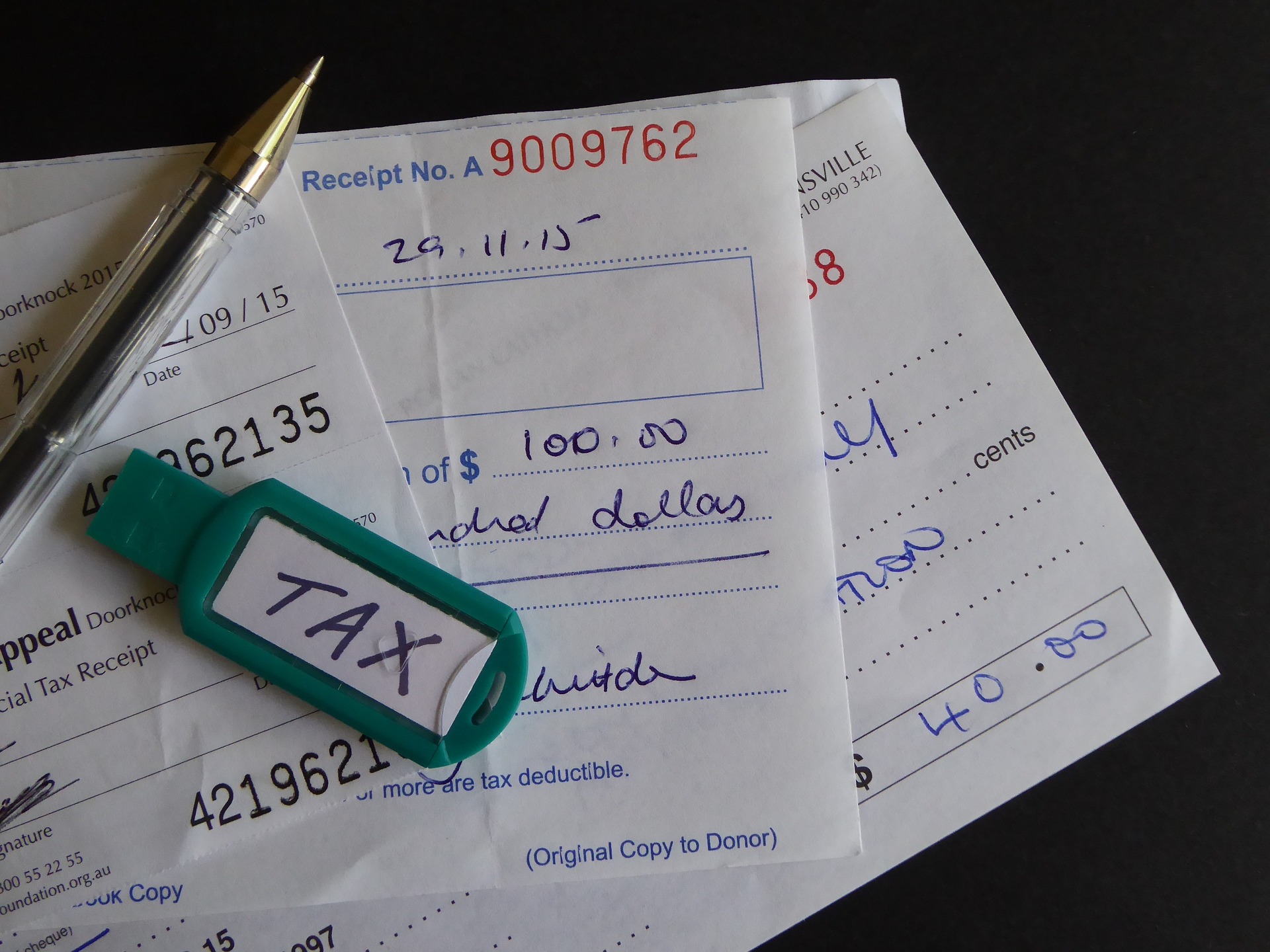SMSFs that own property are facing the prospect of tenants falling behind in their rent payments and their other obligations under the lease due to the economic stress arising from COVID-19.
Australian states and territories will put a six-month moratorium on evictions for both residential and commercial tenants during the coronavirus pandemic, Prime Minister Scott Morrison announced on 29 March 2020. “Now there is a lot more work to be done here and my message to tenants, particularly commercial tenants and commercial landlords is a very straight forward one: we need you to sit down, talk to each other and work this out,” he said.
At the time of this article, the states and territories are still to provide detail on any arrangements that are proposed to assist landlords and tenants.
The ATO have provided a non-binding practical approach of broadly not applying resources to this issue for FY2020 and FY2021. However, this announcement, while positive, should not be relied on given the considerable downside risks.
From a legal perspective, if these matters are not carefully managed and documented, SMSFs and their trustees/directors could potentially face the risk of significant penalties under the Superannuation Industry (Supervision) Act 1993 (Cth) (‘SISA’) and the Superannuation Industry (Supervision) Regulations 1994 (Cth) (‘SISR’).
This article examines the position of an SMSF leasing business real property to an arm’s length tenant and to a related party tenant and provides recommendations for those that wish to ensure they minimise downside risk and can position themselves with sound legal backing.
SMSF and arm’s length tenants
If the tenant has no direct or indirect relationship with the SMSF trustee (who is the landlord), then the SMSF trustee may be in a position to grant rent relief without contravening the SISA. Under this scenario, the parties probably would be dealing at arm’s length and, as outlined below, there may be various factors supporting a rent reduction in whole or in part as being in the best interests of fund members. For example, the following reasons could support rent relief:
- The tenant may have a better chance of successfully trading out of its current predicament; especially as many other landlords are being requested to grant relief due to the economic stress arising from COVID-19.
- The tenant may also be in a position to continue to cover holding costs such as council rates, land tax, regular maintenance of equipment and insurance subject to any applicable law (eg, the Retail Leases Act 2003 (Vic) may preclude a landlord from recovering land tax). Note that a property that has been vacant for some time may not be covered by insurance and having a tenant occupy premises, by itself, can be a significant advantage to a landlord who’s otherwise at risk without insurance.
- There may be further risks of having a vacant property such as break-ins and fires and other damage arising while a property remains vacant and not maintained.
- There may also be little prospect of obtaining another tenant in the near future until the economy recovers after COVID-19 which some predict may take years.
The states and territories arrangements may provide some detail on what changes, if any, are required to be made to a lease agreement as the states and territories have the power to override any lease agreement with a direction or order when a state of emergency is declared. Subject to further developments, a lawyer should be consulted in relation to the terms and conditions in each lease agreement as some may include a ‘force majeure’ clause that allows a party to suspend or terminate the performance of its obligations if certain events occur such as an act of god. Note that since a lease confers a form proprietary interest in relation to the land, the usual contractual law rules such as ‘frustration’ of a contract may not necessarily apply. This area of law is being well researched and commented on by many property law experts.
SMSF and related party tenants
If the tenant is a related party of the SMSF trustee, it is very easy to contravene the SISA provisions and extreme care is required when handling these situations.
Where an SMSF wants to grant any concession under a lease to a related party tenant, they should, after taking appropriate accounting and legal advice, be careful to follow the appropriate steps and gather relevant evidence.
Some of the key issues that an SMSF dealing with a related party tenant will need to deal with include:
- The sole purpose test –– s 62 of SISA. Is the SMSF trustee merely reacting to assist a related party rather than acting in accordance with what an arm’s length landlord would do? As noted above, an arm’s length landlord may decide to grant a concession to an unrelated tenant where that is in the landlord’s best interests.
- The in-house asset test –– pt 8 of SISA. Non-payment of rent is likely to give rise to a loan by the SMSF to the related party and if that loan exceeds 5%, then an in-house asset contravention may arise. Note also that the terms of the lease may apply a penalty interest rate to the amount owed.
- The prohibition against lending or providing financial assistance to a member or relative –– s 65 of SISA. If the SMSF is leasing to a member or relative of an SMSF, then there is a potential contravention of s 65 if the arrangement is not on arm’s length commercial terms.
- The arm’s length test –– s 109 of SISA. Broadly, all investments and transactions involving an SMSF must be made and maintained –– on an ongoing basis –– on an arm’s length terms.
As you can appreciate from the above, an SMSF trustee will need to demonstrate that granting any concession is consistent with what arm’s length parties would agree to do and is in the best interests of the fund and its members.
They should also examine all available options and obtain advice from an experienced real estate agent with regard to the prevailing market conditions for that particular lease in that location and determine whether another tenant can be obtained and when, etc.
Additionally, the SMSF trustee should gather any evidence that supports the course of action proposed to be taken, and make sure to consider other alternatives assuming the tenant was an arm’s length tenant (rather than a related party tenant) in those particular circumstances.
A detailed review of the lease documentation should be undertaken as soon as practicable and advice taken on what variations may be needed to be made to the lease to reflect any concession that may be granted. Naturally, any variation to the lease agreement should be prepared by an experienced and qualified lawyer.
Note that even though the SMSF trustee may gather evidence that the outcome of the concession granted to a related party tenant under the lease reflects arm’s length terms, that may not necessarily protect them from contraventions of the SISA occurring if, for instance, there is a loan or financial assistance that invokes ss 65 or 109 of SISA.
ATO practical approach
The ATO’s website (at QC 61775) on 27 March 2020 was updated to state under the heading ‘Temporarily reducing rent’:
Question: My SMSF owns real property and wants to give my tenant – who is a related party – a reduction in rent because of the financial impacts of the COVID-19. Charging a related party a price that is less than market value is usually a contravention. Given the impacts of the COVID-19, will the ATO take action if I do this?
Answer: Some landlords are giving their tenants a reduction in or waiver of rent because of the financial impacts of the COVID-19 and we understand that you may wish to do so as well. Our compliance approach for the 2019–20 and 2020–21 financial years is that we will not take action where an SMSF gives a tenant – who is also a related party – a temporary rent reduction during this period.
Broadly, the ATO will not actively seek out cases where an SMSF gives a related party tenant a temporary rent reduction during the remainder of FY2020 or FY2021. However, the usual position for such practical approaches previously issued by the ATO is that if the ATO do come across contraventions from other sources, eg, via its usual data detections, reviews or auditor contravention reports (‘ACR’), the ATO will usually apply the legislation in the normal manner. While the ATO should be congratulated on the practical approach reflected above, SMSF trustees should not rely on this non-binding guidance given the substantial downside consequences, especially given these situations may be legitimately resolved with appropriate action as outlined below.
We do understand however that some SMSF trustees and/or businesses may not have the time or resources to obtain proper advice with regard to related party tenants, and may choose to simply rely on the ATO practical approach at their own risk. However, given the consequences, landlords should take every measure available to them to place themselves in as sound position as possible to minimise future risk.
Furthermore, the ATO website does not provide any express relief for an SMSF that owns property via an interposed unit trust, such as a non-geared unit trust (‘NGUT’). Once a contravention of one of the criteria relating to a NGUT is triggered under reg 13.22D of SISR, the trust is ‘forever’ tainted and the SMSF must dispose of its units in that unit trust to comply with the SISR. In particular, if the lease is not legally enforceable or if rent owing by a related party tenant accrues and constitutes a loan under the lease, the unit trust will cease to comply with the criteria in div 13.3A of SISR.
SMSFs with LRBAs –– further implications
If an SMSF has borrowed money under a limited recourse borrowing arrangement (‘LRBA’) to finance the acquisition of a property (whether residential or business real property) a range of other implications may arise including:
- Similar issues to the potential SISA contraventions raised above also may apply if a related party lender does not act at arm’s length in relation to collecting all moneys owing under the LRBA as an arm’s length lender would apply to a third-party lender. However, a related party lender would typically not consider taking any such action against the SMSF trustee given they are related. Again, appropriate arm’s length evidence must be gathered and accounting and legal advice obtained to position against the significant penalties that may otherwise be applied.
- If there is a related party lender, unless the ‘safe harbour’ terms and conditions of the borrowing are consistent with the ATO’s criteria in PCG 2016/5, that are continuously complied with (eg, regular monthly principal and interest repayments), the ATO have advised they will typically consider applying non-arm’s length income (‘NALI’). The following is a helpful extract from this PCG:
The trustees will need to be able to otherwise demonstrate that the arrangement was entered into and maintained on terms consistent with an arm’s length dealing. One example of how a trustee may demonstrate this is by maintaining evidence that shows their particular arrangement is established and maintained on terms that replicate the terms of a commercial loan that is available in the same circumstances.
Indeed, if the tenant reduces or stops paying rent, the SMSF’s ability to make repayments under the LRBA can easily fall into arrears and into default (with the default interest rate –– typically at least 2% higher than normal) under the loan agreement giving rise to a range of further ramifications. If the related party lender provides any relief to the SMSF trustee that is not benchmarked to arm’s length terms (that can be justified in these difficult times), based on recent ATO materials (including LCR 2019/D3) the ATO position is that NALI may then apply to any net income and net capital gain, if any, derived from that property for the entire future period of ownership.
We would be pleased to advise and assist to minimise the potential future risk of NALI being applied.
Possible consequences of contravening SISA
Despite the ATO’s non-binding practical approach outlined above, a range of other contraventions may also occur (or may occur in the near future) in these difficult and stressful economic times if, for example, money is withdrawn without a valid condition of release or existing SMSF assets are used as security for a borrowing by a related party. When added to non-compliance by an SMSF trustee or ‘connected’ unit trust renting property to a related party tenant (eg, a NGUT), then SMSF trustees may be widely exposed to a range of penalties and costly disputation.
There are a range of potential penalties that the ATO may apply unless these matters are appropriately and properly managed, including:
- In extreme cases, the fund could be rendered non-complying with 45% tax imposed on the value of its opening account balance in the year it is rendered non-complying.
- Contravention of a civil penalty such as s 62, s 65, pt 8 and s 109 can result in a monetary penalty of a maximum amount of $504,000 (ie, 2,400 penalty units x $210).
- An administrative penalty, typically of $12,600 per contravention for s 65 and pt 8 and the ATO’s stated policy is to ‘automatically’ impose an administrative penalty for each and every occasion. An SMSF trustee can seek remission of any penalty; the success of which depends on whether the ATO considers any remission is appropriate in the circumstances.
This type of situation highlights the need for making sure SMSF trustees act in compliance with the law and do not make rash or hasty decisions that they may later regret, especially if the actions were designed to assist a related party without any evidence documenting that the actions were consistent with an arm’s length dealing and/or without following and taking the appropriate steps to implement a lease variation.
This is where a written opinion from an SMSF lawyer, which is subject to legal professional privilege, outlining the law in view of the particular facts is a prudent first step to take in this journey. A written opinion that is supported with the right evidence and that is implemented correctly can save on costs that may otherwise arise from needing to respond to the likely auditor or ATO queries and any ACR that may be lodged, which may give rise to unnecessary inquiries by the ATO.
Sole purpose SMSF corporate trustee
If an SMSF trustee grants a concession to a related party tenant, the administrative penalties on their own can, in these types of circumstances, give rise to hundreds of thousands of dollars as the ATO might argue that each monthly payment of rent not made is subject to an additional penalty.
If the SMSF has say two individual trustees, then the administrative penalties will be double the amount that would be imposed on two directors of an SMSF corporate trustee as each individual trustee is subject to the same amount of administrative penalties. For example, if the SMSF has two members who are individual trustees, then the typical $12,600 for a single administrative penalty is double, ie, $25,200. If the SMSF had a corporate trustee with the two members as directors of the corporate trustee, the administrative penalty is $12,600.
Naturally, we strongly recommend that each SMSF has a sole purpose SMSF corporate trustee to minimise legal risk given the current economic conditions. Many SMSFs still have individual trustees who remain personally liable for a fund’s liabilities and the administrative penalty system is a big incentive to move to a corporate trustee in these testing times.
Our recommendation that an SMSF have a sole purpose corporate trustee is also very important in these difficult economic times given that many ‘trading’ companies that also double up as an SMSF trustee, may be facing insolvency with the appointment of an administrator, liquidator, receiver or some other form of external management which could soon ‘take over’ control of that company and make the management the SMSF assets very difficult until that company’s external controller is convinced that the SMSF assets are not capable of being applied towards the creditors. This ‘fight’ alone may prove difficult and costly.
Conclusions
Naturally, the above matters should be taken very seriously and it is important that SMSF trustees obtain sound expert accounting, financial, valuation, legal and other advice to prevent hasty actions that are designed to preserve a related party tenant’s cash flow to assist their business from backfiring.
Written by Daniel Butler and Bryce Figot, DBA Lawyers












